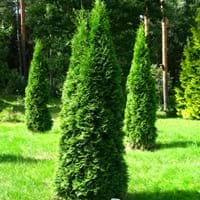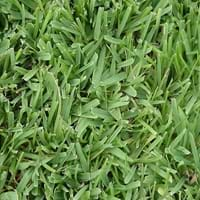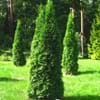Life Span
Perennial
Perennial
Type
Needled or Scaled Evergreen
Grass
Origin
Northeastern United States, Mid-Atlantic United States, Southeastern United States, North-Central United States, Central United States, Canada
World/Pandemic
Types
Not Available
Not Available
Habitat
Forests, gardens, Roadsides
Subtropical climates, Tropical regions
USDA Hardiness Zone
3-7
8-10
AHS Heat Zone
7-1
Not Available
Sunset Zone
A2, A3, 1a, 1b, 2a, 2b, 3a, 3b, 4, 5, 6, 7, 8, 9, 15, 16, 17, 21, 22, 23, 24
H2, 17, 24
Habit
Pyramidal
Mat-forming
Minimum Width
Not Available
Flower Color
Non Flowering Plant
Green, White
Flower Color Modifier
Bicolor
Bicolor
Fruit Color
Green, Light Green
Non Fruiting Plant
Leaf Color in Spring
Dark Green
Green
Leaf Color in Summer
Dark Green
Light Green
Leaf Color in Fall
Olive, Dark Green
Green
Leaf Color in Winter
Dark Green, Brown, Black
Green
Leaf Shape
Compound
Lance shaped
Plant Season
Spring, Summer, Fall, Winter
Spring, Summer, Fall, Winter
Sunlight
Full Sun, Partial Sun
Full Sun, Partial Sun
Growth Rate
Medium
Medium
Type of Soil
Clay, Loam, Sand
Clay, Loam, Sand
The pH of Soil
Acidic, Neutral
Neutral, Alkaline
Soil Drainage
Average
Average
Bloom Time
Spring
Spring, Late Spring, Early Summer, Summer, Late Summer
Tolerances
Drought
Pollution, Salt, Soil Compaction
Where to Plant?
Ground
Ground
How to Plant?
Seedlings, Vegetative Reproduction
Sprigging or Stolonizing
Plant Maintenance
Medium
Medium
Watering Requirements
Average Water Needs
Needs more water during establishment
In Summer
Lots of watering
Lots of watering
In Spring
Moderate
Moderate
In Winter
Average Water
Average Water
Soil pH
Acidic, Neutral
Neutral, Alkaline
Soil Type
Clay, Loam, Sand
Clay, Loam, Sand
Soil Drainage Capacity
Average
Average
Sun Exposure
Full Sun, Partial Sun
Full Sun, Partial Sun
Pruning
Prune if you want to improve plant shape, Remove deadheads, Shape and thin as needed
Remove damaged leaves, Remove dead branches, Remove dead leaves
Fertilizers
All-Purpose Liquid Fertilizer
organic fertlizers
Pests and Diseases
Pests and diseases free
Dollar spot, Leaf spot
Plant Tolerance
Drought
Drought
Flowers
None
Insignificant
Flower Petal Number
Single
Single
Fragrant Bark/Stem
Yes
No
Foliage Texture
Fine
Fine
Foliage Sheen
Matte
Matte
Attracts
Bees, Birds
Billbugs, Crickets, Cutworms
Allergy
no allergic reactions
Not Available
Aesthetic Uses
Beautification, Landscape Designing
Ground Cover
Beauty Benefits
Not Available
Not Available
Environmental Uses
Air purification
Erosion control
Medicinal Uses
No Medicinal Use
No Medicinal Use
Part of Plant Used
Wood
Not Available
Other Uses
Showy Purposes
Used as a golf course turf, Used to feed livestock
Used As Indoor Plant
No
No
Used As Outdoor Plant
Yes
Yes
Garden Design
Hedges, Screening, Wind Break
Lawns and Turf
Botanical Name
THUJA occidentalis 'Techny'
PASPALUM vaginatum
Common Name
White Cedar
Biscuit Grass, Seashore Paspalum
In Hindi
Techny Arborvitae
Seashore Paspalum
In German
Techny Lebensbaum
Seashore Paspalum
In French
Techny Arborvitae
Seashore Paspalum
In Spanish
Techny Arborvitae
Paspalum
In Greek
Techny Arborvitae
Αιγιαλός Paspalum
In Portuguese
Techny Arborvitae
seashore Paspalum
In Polish
Techny Tuja
Nad morzem Paspalum
In Latin
Techny Arborvitae
Paspalum maris
Phylum
Pinophyta
Magnoliophyta
Class
Pinopsida
Lilopsida
Family
Cupressaceae
Poaceae
Clade
Dicotyledonous
Angiosperms, Commelinids, Monocots
Tribe
Not Available
Paniceae
Subfamily
Not Available
Panicoideae
Number of Species
Not Available
Not Available
Difference Between Techny Arborvitae and Seashore Paspalum
If you are confused whether Techny Arborvitae or Seashore Paspalum are same, here are some features about those plants to help you choose better. Many people think that these two plants have the same characteristics, but one can see Techny Arborvitae and Seashore Paspalum Information and learn more about it. Fertilizers required for proper growth of Techny Arborvitae are All-Purpose Liquid Fertilizer, whereas for Seashore Paspalum fertilizers required are organic fertlizers. Hence, one should know the basic difference between Techny Arborvitae and Seashore Paspalum if you are planning to have them in your garden to enhance its beauty.
<
Flowering PlantsImportance of Techny Arborvitae and Seashore Paspalum
Want to have the most appropriate plant for your garden? You might want to know the importance of Techny Arborvitae and Seashore Paspalum. Basically, these two plants vary in many aspects. Compare Techny Arborvitae and Seashore Paspalum as they differ in many characteristics such as their life, care, benefits, facts, etc. Every gardener must at least have the slightest clue about the plants he wants to plant in his garden. Compare their benefits, which differ in many ways like facts and uses. The medicinal use of Techny Arborvitae is No Medicinal Use whereas of Seashore Paspalum is No Medicinal Use. Techny Arborvitae has beauty benefits as follows: Not Available while Seashore Paspalum has beauty benefits as follows: Not Available.
Compare Facts of Techny Arborvitae vs Seashore Paspalum
How to choose the best garden plant for your garden depending upon its facts? Here garden plant comparison will help you to solve this query. Compare the facts of Techny Arborvitae vs Seashore Paspalum and know which one to choose. As garden plants have benefits and other uses, allergy is also a major drawback of plants for some people. Allergic reactions of Techny Arborvitae are no allergic reactions whereas of Seashore Paspalum have Not Available respectively. Having a fruit bearing plant in your garden can be a plus point of your garden. Techny Arborvitae has no showy fruits and Seashore Paspalum has no showy fruits. Also Techny Arborvitae is not flowering and Seashore Paspalum is not flowering . You can compare Techny Arborvitae and Seashore Paspalum facts and facts of other plants too.





